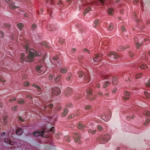PHILADELPHIA—At the ACR/ARHP Annual Scientific Meeting in Philadelphia, three researchers continued the ongoing debate about optimal treatment strategies of lupus nephritis. As the debate indicated, lack of solid data on certain populations, concerns about side effects, and insufficient follow-up preclude consensus until more research has been completed.
For induction therapy, the choices are generally highdose IV cyclophosphamide (CY), the so-called National Institutes of Health (NIH) regimen; low-dose IV CY, the socalled Euro-Lupus regimen;1 azathioprine (AZ); or mycophenolate mofetil (MMF). There has also been recent use of the biologic rituximab. All of these immunosuppressive agents are used in combination with glucocorticoids.
For maintenance therapy, also the subject of continuing debate, the choices are often high-dose CY; low-dose CY; AZ and the Euro-Lupus regime; MMF; rituximab/CY combination; or rituximab alone.
Much of the debate centers on the efficacy of CY versus MMF. Although the NIH regime has improved survival and remission rates, not all patients have a favorable response, and toxicities are not uncommon with the high-dose regimen. These toxicities can include ovarian failure, severe infections, and reduced efficacy in black patients. Complicating the decision making at this point is the lack of long-term data for other therapies, as well as trials that do not indicate superiority of one drug over another.
According to Ellen M. Ginzler, MD, MPH, chief of rheumatology at State University of New York-Downstate Medical Center in Brooklyn, there is an “unmet need for new agents.” But until those agents are developed, “if we can show equal efficacy, then we need to consider the tolerability and compliance issues, the racial and ethnic issues, the cost, availability, and reimbursement for these agents,” she said.2
Frederic A. Houssiau, MD, PhD, of the department of rheumatology at Universite Catholique Louvain in Brussels, Belgium, said that further drug development is needed for better maintenance therapy. “We don’t have a good maintenance therapy so far,” he said, adding that what a physician does at the bedside remains most important, including good follow-up; controlling blood pressure, blood sugar, and proteinuria with either angiotensin-converting enzyme inhibitors or angiotensin II receptor blockers; and treating dyslipidemia. To illustrate the factors that complicate treatment strategies, the panel considered three high-risk cases.
Case 1: Young Black Woman
The first case was that of a 34-year-old black woman with new-onset class IV lupus nephritis and moderate renal function. She has one child and does not want another. After treatment for six months, she had complete renal remission. The two questions related to her case centered on the best induction therapy and best maintenance therapy.
